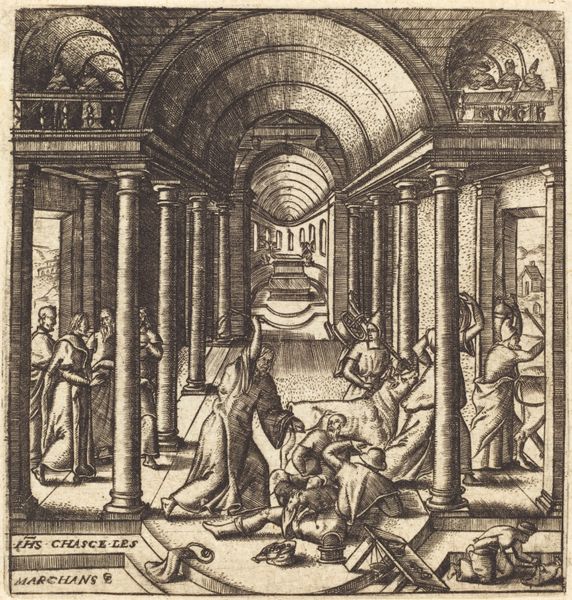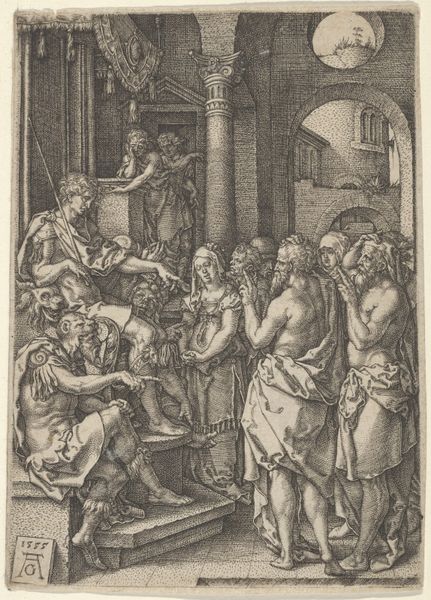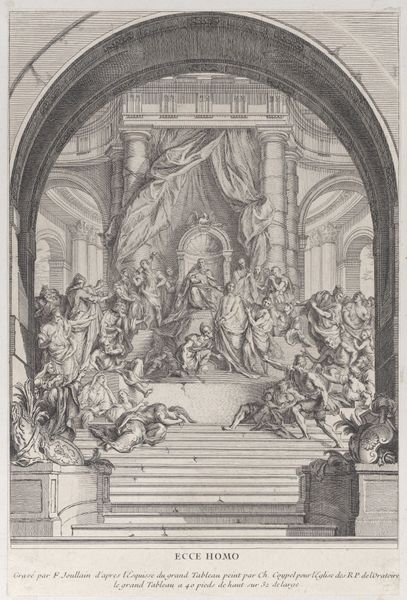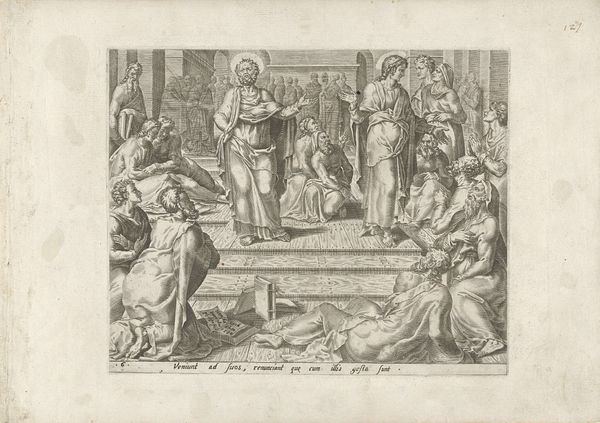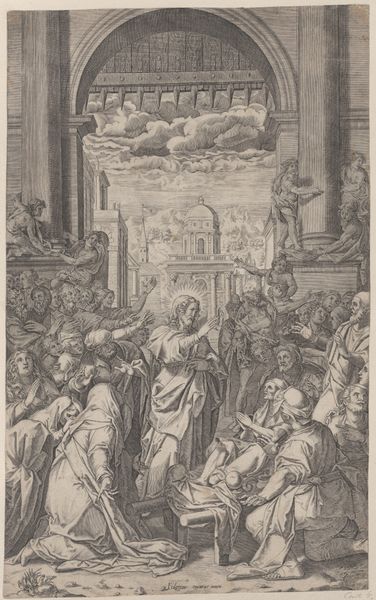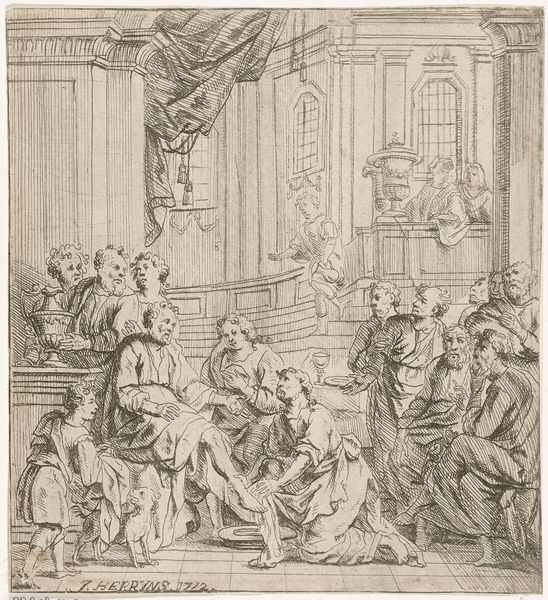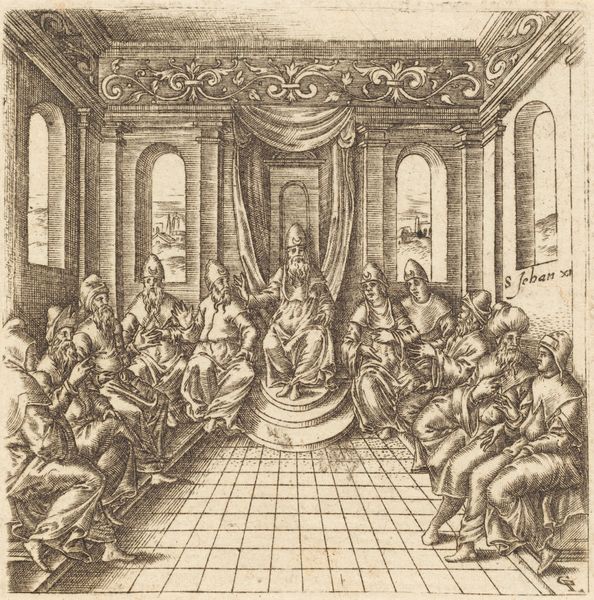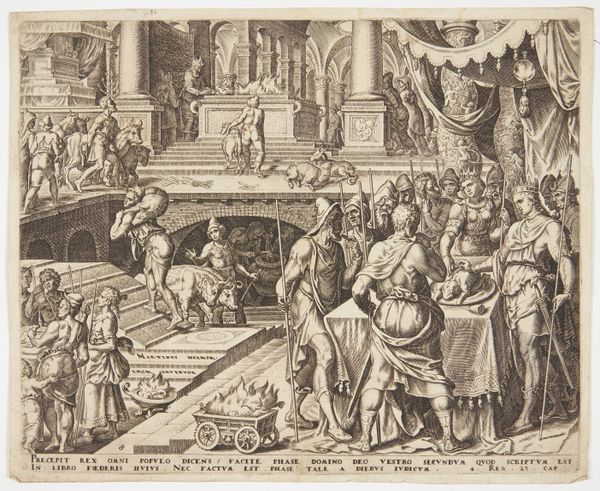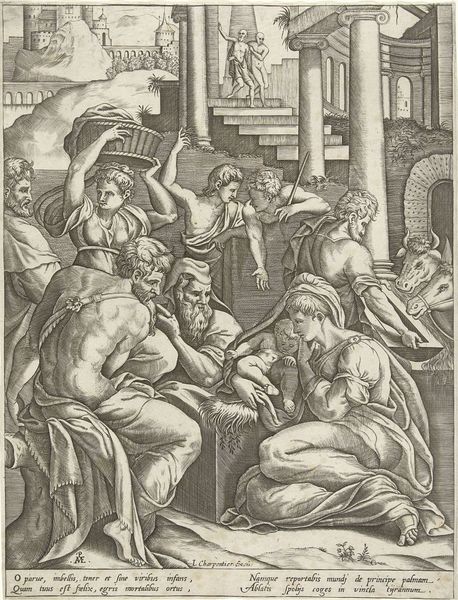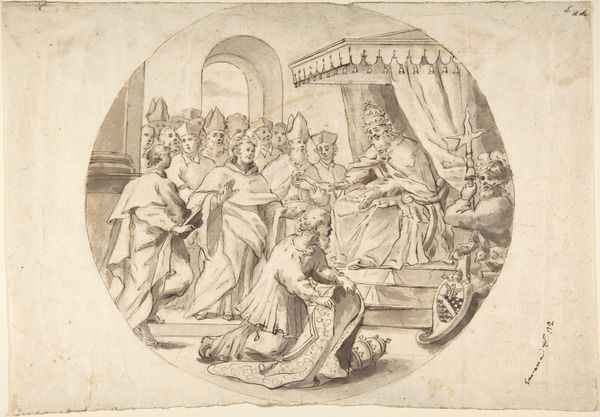
print, engraving
#
narrative-art
# print
#
figuration
#
line
#
history-painting
#
italian-renaissance
#
engraving
Copyright: National Gallery of Art: CC0 1.0
Curator: This is "Christ Heals the Paralyzed Man," an engraving by Léonard Gaultier, dating from around 1576 to 1580. The scene, dense with figures, depicts the biblical story in a classically Renaissance architectural setting. Editor: Wow, it feels so spatially complex, almost like Escher did a Renaissance drawing! It’s a tad overwhelming at first glance, but there’s a dynamic energy that draws you in. Like you're eavesdropping on a very important, intimate moment. Curator: Indeed, the composition uses line to create depth, situating Christ centrally as a focal point within this theatrical space. Considering its historical context, we might read it through lenses of power, ability, and even faith, questioning whose voices are truly being centered. Note the balcony figures; a reminder that hierarchy existed within the space itself. Editor: That’s fascinating, like, even in a moment of apparent healing, these invisible power structures remain… literally elevated! The cross-hatching creates almost a sense of shimmering unease and drama, while simultaneously adding tonal depth. Curator: Gaultier’s rendering serves to promote humanist values during a time of immense societal change, albeit one still shaped by complex religious and social constraints. The physical body of the paralyzed man becomes a site for renegotiating concepts of religious law, access and privilege within public settings. Editor: I get that. I can feel that tension, the paralyzed man almost disrupts this otherwise neat, imposing architectural space. He lies diagonally on the floor; that one shape seems to destabilize everything! A reminder that perfection is maybe, sometimes, just an illusion. Curator: A sharp observation. Through the artwork’s meticulous detail, we gain a valuable understanding of societal structures within the context of the Renaissance, noting the power of a narrative about Christ to negotiate and reflect shifting social and spiritual dynamics. Editor: Absolutely, It is impressive how even in a rather small format, so many complex ideas can be expressed! I almost wish I had a magnifying glass! It would be nice to inspect it further; its richness has an infinite appeal.
Comments
No comments
Be the first to comment and join the conversation on the ultimate creative platform.
